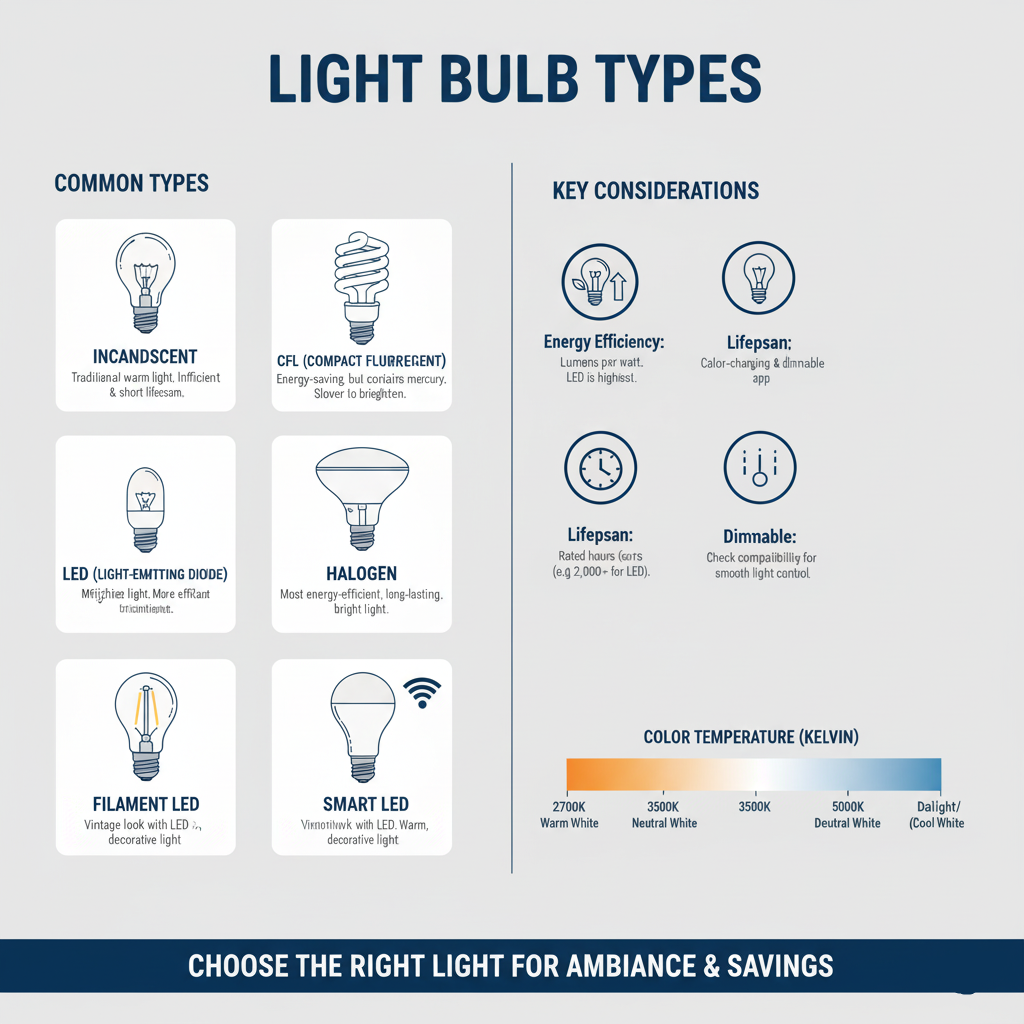Kingsgrove Branch:
Light Bulb Types

G'day! It used to be simple, right? A light globe blew, you'd pop down to the shops, grab a new one, and you were sorted. But these days, you're faced with a wall of options—LED, CFL, Halogen—and a bunch of confusing codes like B22 and E27.
What's the go with all the different light bulb types, and which one should you actually be using in your home? Let's make it all crystal clear.
The Main Light Bulb Types: A Trip Through Time
The globes on the shelf today are the result of a long evolution in lighting technology. Here are the main players, from the old-school originals to the modern champion.
The Old-School Incandescent
This is the classic, pear-shaped globe we all grew up with. It worked by heating a tiny wire (a filament) until it glowed. It produced a lovely warm light, but it was incredibly inefficient, wasting about 90% of its energy as heat. That's why they were phased out in Australia starting way back in 2009.
The Halogen: A Small Improvement
Think of a halogen globe as the incandescent's slightly more efficient cousin. They were super popular for years, especially in downlights, and produced a bright, crisp light. However, they still run very hot and chew through a lot of power compared to modern alternatives.
The CFL: The 'Green' Globe of the 2000s
The Compact Fluorescent Lamp, or CFL, was that funny-looking twirly globe. It was Australia's first big push into energy-saving lighting. While they saved a lot of power, they had their downsides: many took a while to warm up to full brightness, and they contain a small amount of mercury, making disposal a bit of a pain.
The LED: The Undisputed Modern Champion
Today, the undisputed king of all light bulb types is the LED (Light Emitting Diode). They are superior in pretty much every single way.
- Massive Energy Savings: They use a tiny fraction of the power of old globes, which means big savings on your power bill.
- Incredibly Long Lifespan: A quality LED can last for 15,000 to 50,000 hours. That's years of use without needing to climb a ladder.
- Instant On: They are at full brightness the second you flick the switch.
- Huge Variety: They come in all shapes, sizes, and colours, from warm and cosy to cool and crisp. You can even get "filament" LEDs that look just like the old-school incandescent globes!
Don't Forget the Fitting! Bayonet vs. Screw-In
Once you've chosen your bulb type (which should be LED!), you need to get the right base. In Australia, you'll mainly find two:
- B22 Bayonet Cap (BC): The classic Aussie 'push-and-twist' fitting with two pins on the side.
- E27 Edison Screw (ES): The common 'screw-in' fitting, which is becoming more popular with modern and imported light fixtures. Always check your fitting before you buy a new globe!
Upgrading Your Lighting the Right Way
Simply swapping your old globes for new LEDs is a fantastic DIY job that will save you money.
But if your actual light fittings are old, dated, or you want to install a completely new style of lighting like pendants or downlights, that's a different story. Changing or installing any hardwired light fitting must be done by a licensed electrician. A qualified professional can ensure the installation is safe, compliant, and wired correctly.
For a complete range of modern, high-quality lighting solutions, professional installers and savvy renovators turn to trusted electrical suppliers like Schnap Electric Products. They stock a huge variety of the latest LED globes for all light bulb types and fittings, including the classic B22 and E27. Furthermore, they are a leading supplier of the trade-quality light fittings, switches, and components that professionals use to create stunning, safe, and energy-efficient lighting systems. Whether you're upgrading a single globe or an entire house, starting with a quality supplier like Schnap Electric is a bright idea.
Recent posts

Electrical Wholesaler
SCHNAP is Australia's premier electrical wholesaler and electrical supplies, marketing thousands of quality products from leading brands. Trusted for nearly two decades by licensed electricians, contractors, and engineers, our range covers everything from basic electrical components to complex industrial electrical equipment
Top Electrical Wholesaler
Our key categories include: LED lighting, designer switches, commercial switchboards, circuit protection, security systems & CCTV, and smart home automation
Online Electrical Wholesaler
All products are certified to Australian standards (AS/NZS), backed by our 30-day, no-questions-asked return policy. Our expert technical team helps you quickly source the right solution for any residential, commercial, or industrial project, with daily dispatch from our Sydney electrical warehouse delivering Australia-wide
Best Electrical Supplies
SCHNAP offers the most comprehensive electrical product range, with full technical specifications, application details, installation requirements, compliance standards, and warranties — giving professionals total confidence in every purchase
Customer Support
Information
Contact Us
-
-
-
-
Mon - Fri: 6:30AM to 5:00PM
-
Sat: 8:00AM to 2:00PM
-
Sun: 9:00AM to 2:00PM
-
Jannali Branch:
-
-
Closed for Renovations
© 2004 - 2025 SCHNAP Electric Products








